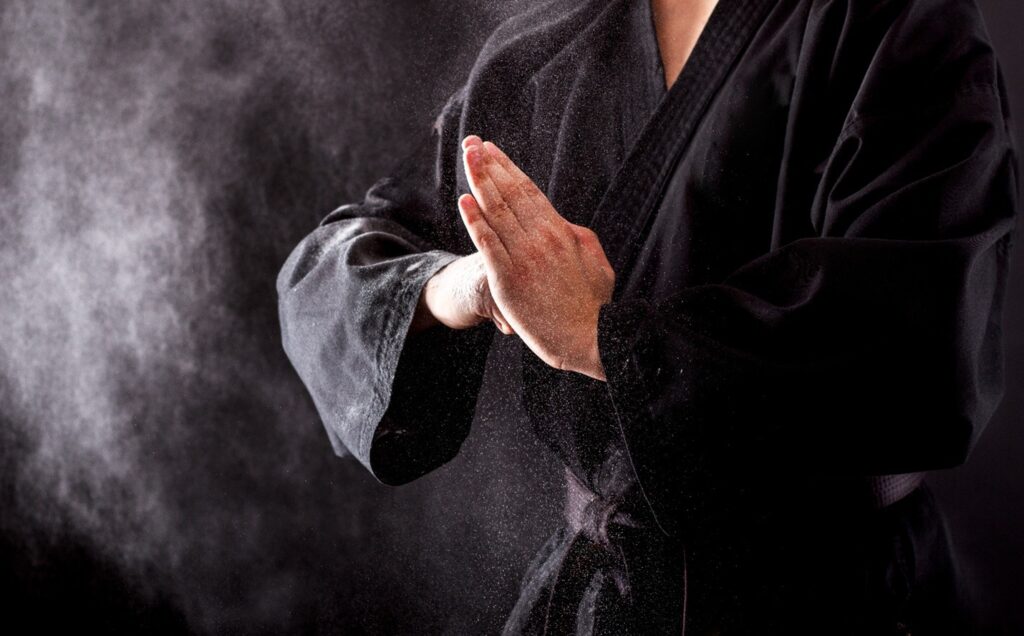
Mixed Martial Arts (MMA) has emerged as a premier combat sport, captivating audiences worldwide with its blend of striking and grappling techniques as well as investors looking to cash in on a lucrative opportunity. While MMA is often viewed as a contemporary phenomenon, its roots are deeply entrenched in traditional martial arts.
Whether you’re an amateur fighter or even someone who appreciates sport from the sidelines, the evolution of MMA has likely caught your attention. What once seemed like a battleground for brute force now showcases the strategic depth and discipline of traditional martial arts. From the precision of karate to the calculated movement of jiu-jitsu, ancient techniques have been seamlessly integrated into the modern MMA toolkit. Fighters who master these time-honored disciplines often display better timing, control, and mental resilience inside the cage.
For dedicated enthusiasts, this deeper understanding of fighting styles also sharpens their instincts when placing bets. Many find themselves making smarter picks on their favourite fights and fighters through casino and sports betting platforms, especially those offering no deposit bonuses that make the thrill even more rewarding. We recommend AussieCodes.com for this.
If you are looking to expand your knowledge about MMA, for the purposes of winning big on your next wager or simply out of interest, you are in the right place. This article explores the significant influence of traditional martial arts on modern MMA, highlighting how age-old disciplines have shaped the techniques, philosophies, and training methodologies of today’s fighters.
Historical Roots of Modern MMA
The inception of MMA was marked by style-versus-style competitions, where practitioners from various martial arts tested their skills against one another. These early contests showcased the effectiveness of different traditional disciplines and laid the groundwork for the integrated approach seen in MMA today.
Brazilian Jiu-Jitsu: The Ground Game Revolution
Brazilian Jiu-Jitsu (BJJ) has had a profound impact on MMA, emphasizing ground fighting and submission techniques. Originating from Japanese jiu-jitsu and judo, BJJ was refined in Brazil to focus on leverage and technique, allowing smaller practitioners to overcome larger opponents. The success of BJJ practitioners in early MMA competitions highlighted the importance of ground fighting, making it a fundamental component of modern MMA training.
Muay Thai: The Art of Eight Limbs
Muay Thai, Thailand’s national sport, is renowned for its powerful strikes using fists, elbows, knees, and shins. Its emphasis on clinch work and devastating strikes has made it a cornerstone of the striking aspect in MMA. Many MMA fighters incorporate Muay Thai techniques to enhance their stand-up game, benefiting from its effectiveness in close-range combat.
Wrestling: Control and Takedowns
Wrestling, one of the oldest forms of combat, has significantly influenced MMA with its focus on takedowns, control, and positional dominance. Fighters with strong wrestling backgrounds often dictate the pace of a fight, choosing whether to keep the bout standing or take it to the ground. This control is a strategic advantage in MMA competitions.
Ethical Foundations and Core Values
Traditional martial arts instill core principles such as respect, discipline, humility, and perseverance. These values are integral to personal development and foster a supportive community within the martial arts world. In modern MMA, these principles are upheld as fighters bow before entering the ring, show respect to their opponents, and adhere to a code of conduct that transcends mere competition. This ethical foundation ensures that MMA remains not just a sport, but a discipline that cultivates character and mutual respect among practitioners.
A Melting Pot of Techniques and Training Methods
Traditional martial arts offer a diverse arsenal of techniques that have been adapted into MMA. For instance, the spinning back kick from Taekwondo, the elbow strikes from Muay Thai, and the armbar submissions from Judo are all prevalent in MMA. Training methods such as kata (forms) in Karate and shadowboxing in Boxing help practitioners develop muscle memory, precision, and fluidity in movement. These time-honored practices enhance a fighter’s ability to execute techniques effectively under the pressure of competition.
The Evolution of MMA – A Balance Between Tradition and Innovation
While tradition provides a solid foundation, innovation drives the evolution of martial arts. Modern MMA training integrates traditional techniques with contemporary advancements such as sports science, nutrition, and psychological conditioning. This synthesis allows fighters to optimize performance while honoring the essence of traditional martial arts. For example, video analysis is now employed to refine techniques, blending traditional skill sets with modern technology to enhance a fighter’s effectiveness.
Preserving Cultural Traditions in A Global Age
As MMA has gained global popularity, it has facilitated a cross-cultural exchange of martial arts practices. Traditional martial arts from various regions have found new life within the MMA framework, preserving cultural heritage while adapting to the modern competitive landscape. Events and seminars celebrating traditional forms and techniques contribute to the appreciation and continuation of these ancient arts, ensuring that their legacy endures within the evolving world of combat sports.
In short, the integration of traditional martial arts into modern MMA underscores the enduring relevance of these ancient disciplines. By embracing the techniques, philosophies, and values of traditional martial arts, MMA fighters enrich their skill sets and uphold a legacy of respect and discipline. This harmonious blend of tradition and innovation ensures that the spirit of martial arts continues to thrive in the contemporary arena, honoring the past while forging the future of combat sports.
